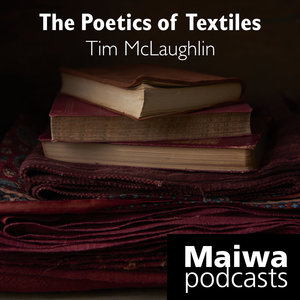 2009 Maiwa Textile Symposium
2009 Maiwa Textile SymposiumWorkshop
Instructor Ann Johnston
This is a great opportunity to study with Ann Johnston, renowned author and textile artist. Ann travels from Oregon to teach this workshop.
Dyed to Clamp will expand the possibilities of low-water immersion dyeing as described in Ann’s book Color By Accident. Basic information and exercises will be given, then students will be introduced to designing by mechanically resisting the penetration of the dye into parts of the fabric. Endless variables of repeat patterns are possible using folds, stitching, and clamps. The process will give students the opportunity to observe the individual characteristics of the various single-chemical colours available in Procion MX colours, and they will learn how those characteristics impact the final results. As we fold, wrinkle and clamp, dye and over dye, we will be producing wonderful one-of-a-kind fabrics and learning how to make many more.
Ann Johnston
First, Ann learned to sew, then she learned to dye fabric. In between, she earned a degree in Literature from Stanford University and a Masters in Geography at the University of Oregon. She taught new math in Lima, Peru, raised two sons in Oregon with her husband Jim, and started quilting. Ann’s years of experimentation with dye and fabric have led to piles of quilts, worldwide travel, numerous shows and exhibitions, five books, and not a few aches and pains. Her collectors respect her viewpoint and her students admire her generosity and skill in teaching what she knows.
Dyed to Clamp will expand the possibilities of low-water immersion dyeing as described in Ann’s book Color By Accident. Basic information and exercises will be given, then students will be introduced to designing by mechanically resisting the penetration of the dye into parts of the fabric. Endless variables of repeat patterns are possible using folds, stitching, and clamps. The process will give students the opportunity to observe the individual characteristics of the various single-chemical colours available in Procion MX colours, and they will learn how those characteristics impact the final results. As we fold, wrinkle and clamp, dye and over dye, we will be producing wonderful one-of-a-kind fabrics and learning how to make many more.
Ann Johnston
First, Ann learned to sew, then she learned to dye fabric. In between, she earned a degree in Literature from Stanford University and a Masters in Geography at the University of Oregon. She taught new math in Lima, Peru, raised two sons in Oregon with her husband Jim, and started quilting. Ann’s years of experimentation with dye and fabric have led to piles of quilts, worldwide travel, numerous shows and exhibitions, five books, and not a few aches and pains. Her collectors respect her viewpoint and her students admire her generosity and skill in teaching what she knows.
























 2009 Maiwa Textile Symposium
2009 Maiwa Textile Symposium 












